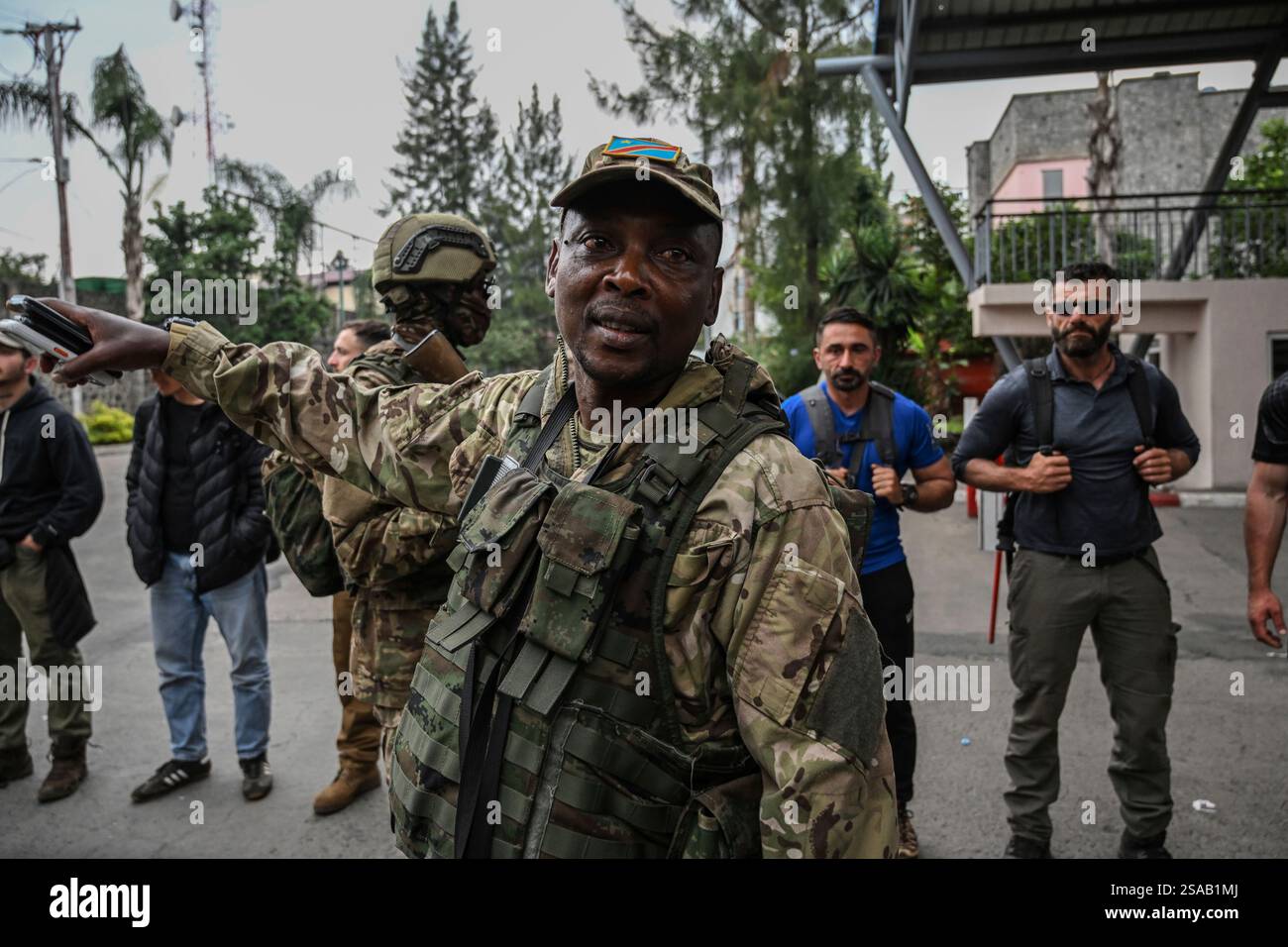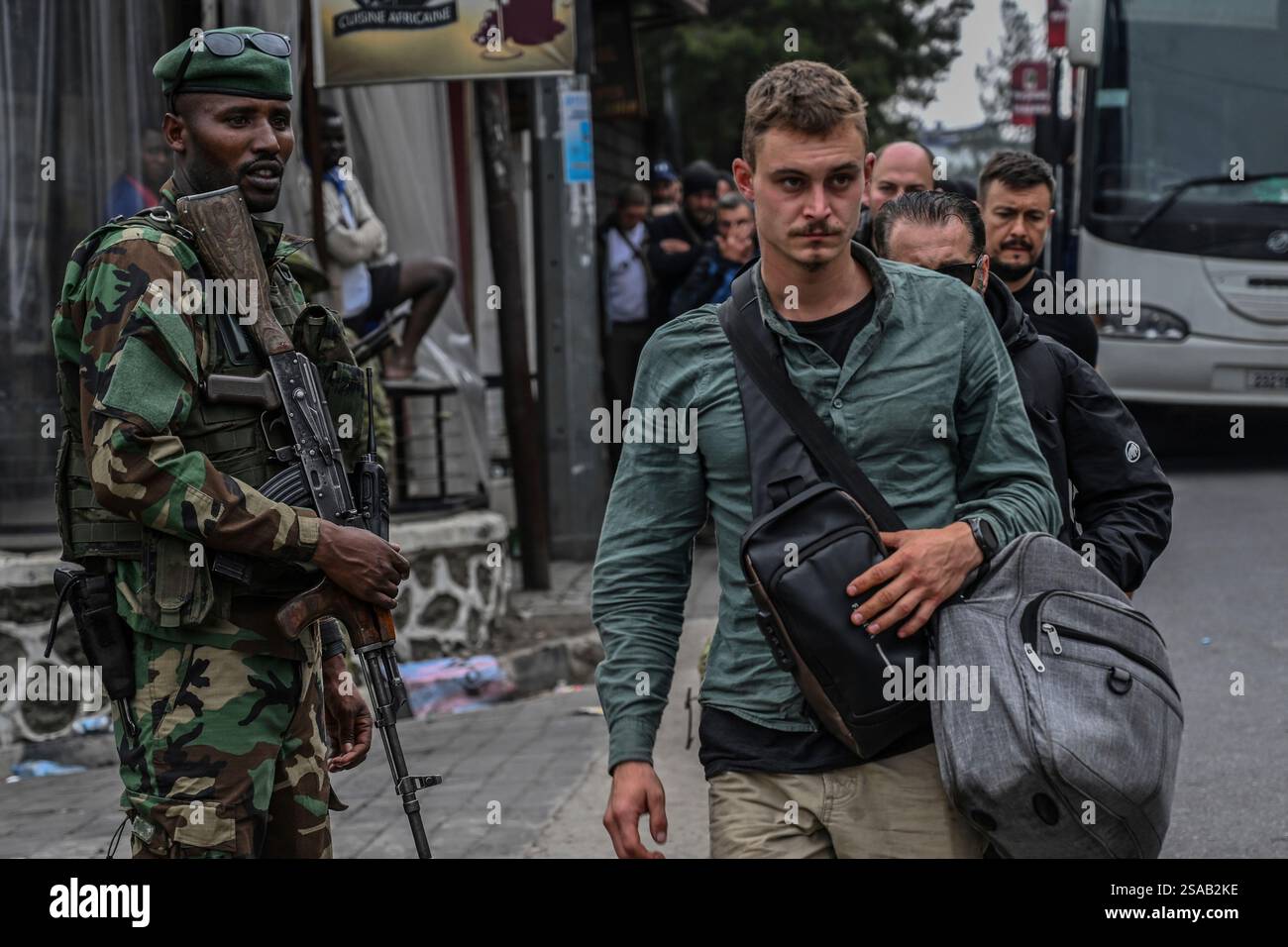Outnumbered 8,000 to 300: Romanian Mercenaries" Pivotal Stand in Goma
In January 2025, a dramatic confrontation unfolded in Goma, Democratic Republic of the Congo (DRC), where a battalion of 300 Romanian mercenaries found themselves besieged by an overwhelming force of 8,000 rebel fighters and Rwandan military personnel. This standoff, marked by fierce combat and strategic maneuvers, culminated in the mercenaries" decision to surrender, raising critical questions about the role of private military contractors in global conflicts. Exclusive footage chronicling these events has surfaced, offering a unique glimpse into this harrowing chapter of modern warfare.
Background & Context
The DRC has long been a theater of conflict, with various armed groups vying for control over its vast natural resources. The involvement of foreign mercenaries adds another layer of complexity to an already volatile situation. The Romanian mercenaries, known as "ROMEOs," were deployed to assist in stabilizing the region amidst ongoing violence and political instability. Their presence was part of a broader trend in which nations and corporations increasingly turn to private military contractors as a means of exerting influence without direct military engagement.
Understanding the motivations behind the ROMEOs" deployment requires examining the geopolitical landscape of Central Africa, where foreign interests often intersect with local conflicts. The mercenaries were reportedly hired to support government forces against rebel groups that have exploited ethnic tensions and resource disputes. However, their involvement also raised ethical questions regarding the use of private soldiers in combat zones, particularly in a country still grappling with the aftermath of a brutal civil war.
Key Developments
The situation in Goma escalated rapidly as the rebels and their Rwandan allies launched a coordinated offensive. Despite being heavily outnumbered, the Romanian mercenaries initially held their ground, demonstrating tactical prowess and combat readiness. Reports indicate that they employed advanced weaponry and strategic defenses, managing to inflict significant casualties on their adversaries during the early stages of the conflict.
As the siege progressed, however, supplies dwindled, and the mercenaries found themselves increasingly isolated. The rebels, bolstered by local knowledge and overwhelming manpower, gradually tightened their grip around Goma. In a final push, the ROMEOs faced a stark choice: continue fighting against insurmountable odds or surrender. Ultimately, they opted for the latter, laying down their arms in a move that shocked observers and raised questions about the viability of private military operations in high-stakes environments.
\n\n
Image for Outnumbered 8,000 to 300: Romanian Mercenaries" Pivotal Stand in Goma
Broader Impact
The Romanian mercenaries" surrender reverberates beyond the immediate battlefield, prompting a reevaluation of the role of mercenaries in contemporary conflicts. Analysts suggest that this incident could lead to increased scrutiny of private military contractors, particularly regarding their accountability and the legal frameworks governing their operations. The DRC"s experience could serve as a cautionary tale for other nations considering similar engagements, highlighting the potential pitfalls of outsourcing military responsibilities.
Moreover, the conflict in Goma underscores the ongoing challenges faced by the Congolese government in asserting control over its territory. The inability to secure a decisive victory against rebel forces raises concerns about the stability of the region and the potential for further violence. As previously reported, similar situations have unfolded in other parts of Africa, where foreign mercenaries have been employed with mixed results, often exacerbating existing tensions rather than resolving them.
What"s Next
In the wake of the Romanian mercenaries" surrender, the DRC government faces critical decisions regarding its military strategy and foreign partnerships. There is an urgent need for a comprehensive approach that addresses not only the immediate security concerns but also the underlying issues fueling the conflict, such as poverty, governance, and ethnic divisions. Observers are closely monitoring how the situation will evolve, particularly as rebel groups may see this moment as a victory that could embolden their efforts elsewhere in the country.
Furthermore, the international community may need to reassess its engagement in the DRC, balancing support for government forces with the imperative to uphold human rights and prevent further civilian suffering. As the dust settles in Goma, the lessons learned from this confrontation could influence future military policies and interventions, reshaping the landscape of global conflict management.

Image for Outnumbered 8,000 to 300: Romanian Mercenaries" Pivotal Stand in Goma








![[Video] Vladimir Putin delivers speech in military uniform](/_next/image?url=%2Fapi%2Fimage%2Fthumbnails%2Fthumbnail-1764621642413-vh08a-thumbnail.jpg&w=3840&q=75)